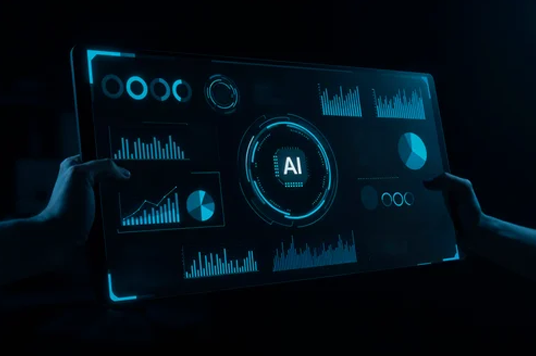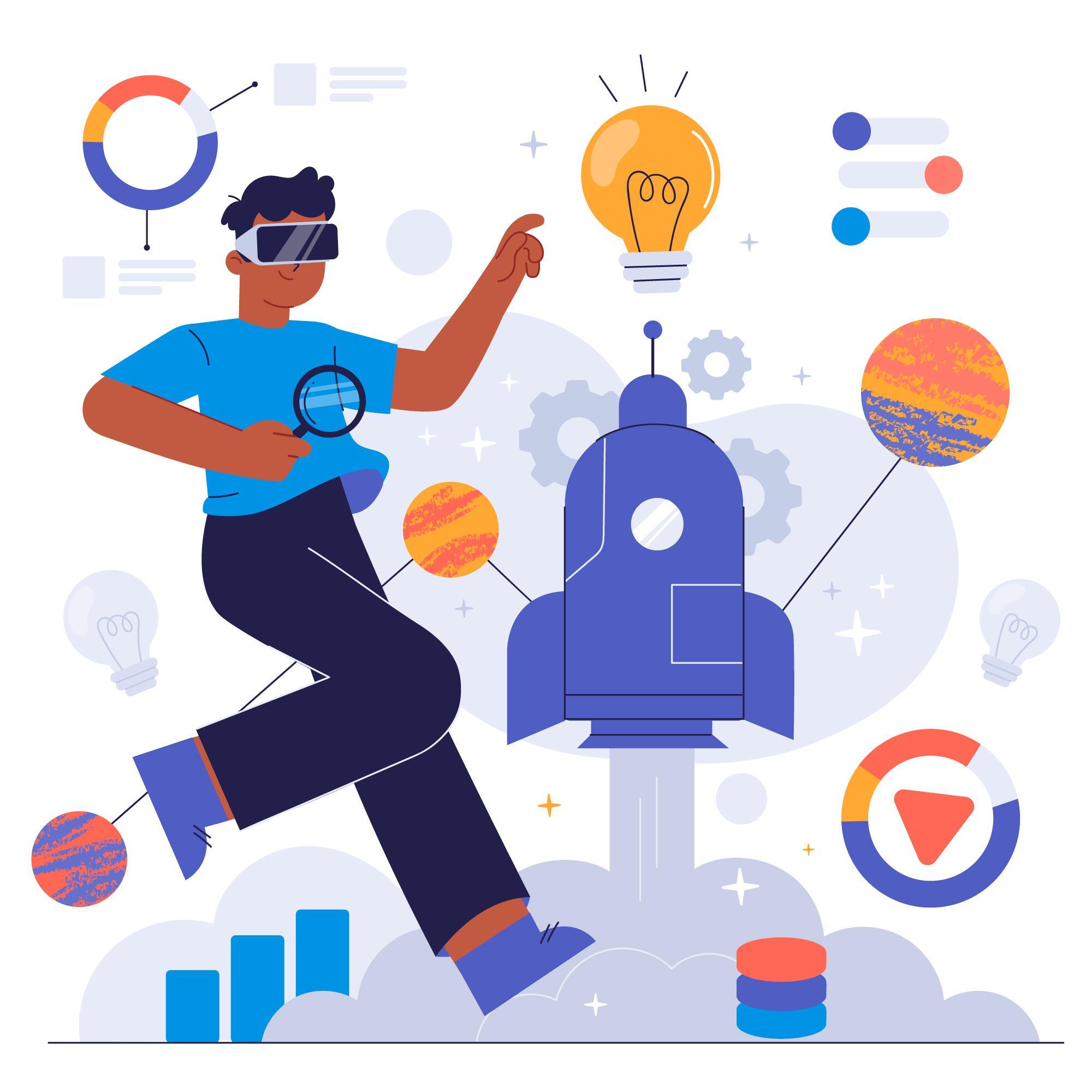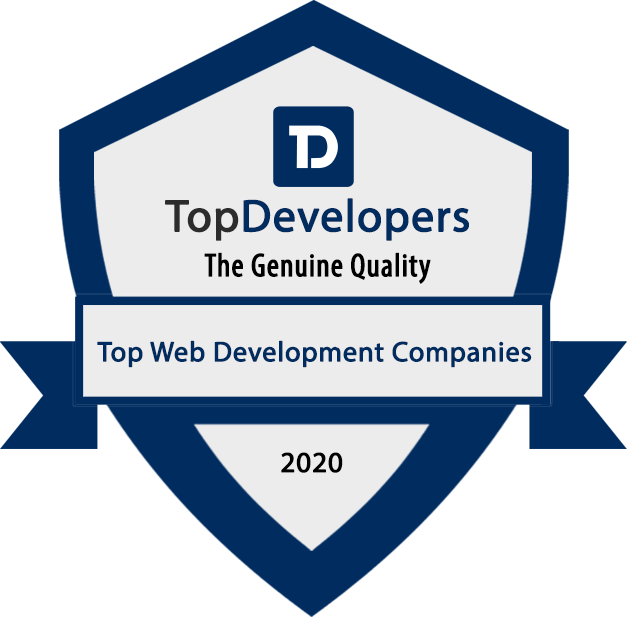Artificial Intelligence (AI) has evolved from a theoretical concept into a cornerstone of enterprise innovation. As we progress through 2025, AI's influence is omnipresent, transforming how businesses operate, compete, and serve customers. The global AI ecosystem has matured at an extraordinary pace, fueled by powerful computational advances, expanding datasets, and a pressing need for smarter automation. AI is no longer an experimental technology relegated to R&D departments. It has become a foundational capability embedded across departments—from engineering and marketing to HR, finance, and customer support.
In this new landscape, companies are leveraging AI not just to optimize workflows, but to reimagine business models, develop new revenue streams, and gain a lasting competitive edge. For example, traditional retailers are turning into data-first personalization engines, banks are deploying AI to deliver hyper-personalized financial advice in real time, and manufacturers are applying predictive maintenance to eliminate downtime. These are not edge cases; they are becoming the norm.
What is particularly remarkable is the democratization of AI. Powerful models and infrastructure are now available through APIs, cloud-native platforms, and plug-and-play solutions. This means even small and medium-sized businesses (SMBs) can build intelligent products and automate processes that once required vast resources. No-code/low-code tools empower business users to create AI-powered workflows without needing to write complex code. This accessibility is fueling a new wave of innovation, especially in industries like education, healthcare, logistics, and marketing.
At the same time, generative AI tools are revolutionizing how content, code, and creative assets are produced. Copywriting, illustration, video editing, product design—every creative discipline is being augmented, if not entirely reshaped, by models that can generate usable output at scale. Meanwhile, embedded AI and edge computing are making it possible to deploy intelligence in physical devices, enabling real-time decisions in sectors like automotive, healthcare monitoring, and industrial IoT.
Moreover, the integration of AI is driving profound cultural and organizational shifts. Teams are becoming AI-literate; hiring practices are evolving to prioritize data fluency and automation thinking. AI is no longer the responsibility of a single team or innovation lab—it is a cross-functional initiative that requires alignment between business, engineering, legal, and operations. Companies that invest in upskilling their workforce and refining AI governance are gaining trust, speed, and efficiency.
This comprehensive guide explores the most compelling AI statistics and trends shaping 2025. We dive into how enterprises across industries are deploying AI, the return on investment (ROI) they are reporting, and the technologies enabling these gains. From edge AI to generative systems, from AI-driven decision-making to hybrid workforce transformation, this analysis offers a clear lens into how AI is being used to deliver impact at scale.
Whether you're a business leader looking to benchmark your AI maturity, a product strategist seeking practical insights, or a CTO evaluating where to invest next, this report provides the context and clarity needed to move forward with confidence in the AI era.
AI Adoption Across Industries
Enterprise Penetration (78% of global enterprises have integrated AI):
The adoption of AI by enterprises has accelerated significantly over the past decade. In 2017, only a fifth of global organizations had experimented with AI; today, that number stands at a remarkable 78%. This growth is driven by a mix of technological maturity, reduced cost of computing, the availability of skilled talent, and increasing pressure to innovate. Businesses have recognized that AI is no longer optional—it's critical to maintain a competitive edge. From automating workflows and analyzing customer behavior to forecasting revenue and personalizing experiences, AI is now an enabler of strategic outcomes. Even smaller businesses are adopting AI via SaaS tools that integrate intelligence into their daily operations.
Healthcare Sector (66% of physicians using AI):
AI has transformed healthcare by enhancing diagnostic accuracy, accelerating drug discovery, and reducing administrative burdens. In 2023, only 38% of physicians used AI-based tools, but that figure has surged to 66% in 2025. This shift is driven by the success of AI in identifying early disease markers through imaging, enabling predictive analytics for treatment outcomes, and supporting virtual care. AI-powered transcription tools help clinicians document patient visits more efficiently, while chatbots handle basic patient queries, freeing up human resources. The global pandemic accelerated telehealth adoption, and AI has been instrumental in enabling remote diagnostics and care continuity.
Financial Services (AI in algorithmic trading, credit, and fraud detection):
The finance sector has been one of the earliest adopters of AI, with widespread use in algorithmic trading, fraud detection, credit scoring, and customer insights. AI models can now process market data in real time to execute trades at optimal moments, reducing human error and latency. Risk assessment algorithms analyze customer behavior to make data-driven lending decisions. Chatbots and virtual financial assistants provide 24/7 service, handling queries and guiding users through complex products. Compliance and regulatory reporting are also being enhanced by AI tools that can automatically detect suspicious transactions and generate detailed audit trails.
Manufacturing (AI for supply chain, predictive maintenance, and quality):
In manufacturing, AI is helping businesses transition from reactive to proactive operations. Through the use of digital twins and real-time data, companies can simulate production environments and optimize performance before issues arise. AI-powered predictive maintenance has drastically reduced equipment downtime by analyzing sensor data and anticipating failures before they occur. Quality control processes have become more efficient with computer vision systems capable of detecting defects on assembly lines with greater accuracy than human inspectors. These applications are especially valuable in industries with high-volume production, where small improvements can yield significant cost savings.
Retail (AI in marketing, service, and inventory):
Retailers are tapping into AI to personalize shopping experiences, predict demand, and manage supply chains more effectively. AI-driven recommendation engines analyze browsing history, purchase patterns, and even emotional cues to serve tailored product suggestions. Chatbots handle thousands of customer inquiries simultaneously, delivering fast and context-aware responses. Inventory management has been revolutionized with real-time stock tracking and demand forecasting, helping avoid overstocking or understocking issues. Retailers are also using AI to optimize pricing strategies, offering dynamic discounts based on customer behavior, competitor prices, and inventory levels. The result is enhanced customer satisfaction and increased revenue.
ROI and Business Impact of AI
Healthcare ROI ($3.20 return for every $1 invested):
Healthcare organizations are experiencing a strong return on investment in AI, with an average of $3.20 earned for every dollar spent. These returns stem from a combination of clinical, operational, and financial efficiencies. AI reduces the burden on healthcare providers by automating repetitive documentation, improving triage systems in emergency departments, and speeding up the claims management process. Predictive analytics is helping to prevent costly hospital readmissions and optimize resource utilization. By enabling early detection of diseases through imaging and genetic analysis, AI contributes to better patient outcomes and lower long-term treatment costs.
Manufacturing Efficiency (3.4x return on generative AI):
Generative AI is unlocking new possibilities in manufacturing. Companies deploying generative AI models are seeing a 3.4x return on investment by automating product design, reducing prototype development time, and streamlining the supply chain. AI-generated CAD models enable engineers to test various configurations and optimize designs based on cost and material efficiency. Simulation-driven design not only saves time but also minimizes errors that typically arise during physical testing. Furthermore, generative AI is used in training manuals and knowledge transfer, allowing less-experienced employees to quickly upskill using AI-generated visual and textual content.
Productivity Gains (up to 40%):
AI is transforming workforce productivity by automating mundane tasks and enabling employees to focus on higher-value activities. For example, in customer support, AI tools can summarize tickets, suggest responses, and even resolve common issues autonomously. In marketing, AI automates A/B testing, audience segmentation, and ad copy generation. In HR, resume screening and interview scheduling are handled by AI, speeding up the hiring process. These automation capabilities can result in productivity improvements of up to 40%, which translates into faster project delivery, better customer experiences, and higher employee engagement.
Generative AI Deployment
Enterprise Usage (65% adoption, $3.70 ROI):
Generative AI has moved beyond buzz to become an essential tool across content creation, software development, and product design. In 2025, 65% of organizations report active use of generative AI, up from around 32% the previous year. These tools generate marketing copy, automate report writing, create design assets, and even code software. Businesses are seeing an average ROI of $3.70 per $1 spent—thanks to faster content delivery, fewer resources needed, and improved personalization. Developers now use AI to auto-complete code, detect bugs, and suggest improvements, while marketers use it to generate thousands of campaign variants in seconds.
Patent Filings (78,000 global applications):
Innovation in generative AI is accelerating, as evidenced by the record 78,000 global patent filings in 2025. China has surpassed the United States in the volume of AI-related patents, reflecting a national strategy to lead in AI innovation. These patents cover everything from AI chips optimized for generative models to algorithms that create original video content. The boom in filings highlights the fierce competition in AI R&D and underscores the strategic importance of AI in both commercial and national development agendas.
AI in Strategic Decision-Making
Executive Adoption (92% planning investments):
Senior executives are increasingly prioritizing AI as a core component of business strategy. A staggering 92% of them report plans for major AI investments by 2028. This isn’t limited to cost-cutting; it’s about smarter, faster decision-making. AI tools help executives understand market trends, customer sentiments, and operational bottlenecks through predictive analytics. Business intelligence platforms infused with AI can automatically generate reports, surface key metrics, and recommend courses of action. Strategic planning, once a largely manual and periodic process, is now continuous, dynamic, and data-driven.
Government Efficiency (UK saving £14B):
Governments are also leveraging AI to drive efficiency, transparency, and service quality. The UK, for instance, is targeting £14 billion in savings by deploying AI across departments such as the National Health Service (NHS), the criminal justice system, and tax administration. AI chatbots are answering citizen queries, predictive models are helping reduce wait times in public services, and fraud detection algorithms are identifying anomalies in benefit claims. These initiatives are expected not only to save costs but also improve public trust by delivering more responsive and reliable services.
Edge AI and Embedded Machine Learning
Market Growth ($66.47B by 2030):
Edge AI is transforming industries that rely on real-time data, such as autonomous vehicles, remote healthcare, and industrial automation. Unlike traditional cloud-based models, edge AI processes data locally—on the device—enabling faster decision-making, lower latency, and improved privacy. The edge AI market is projected to grow to $66.47 billion by 2030, with a CAGR of 21.7% from 2025. This surge is being fueled by advancements in microprocessors, 5G connectivity, and lightweight machine learning models that can run on embedded devices. As AI moves closer to the data source, it unlocks new possibilities in mission-critical applications.
Industry Applications (healthcare, manufacturing, automotive):
In healthcare, wearable devices with embedded AI can monitor patient vitals and alert physicians in real time. In manufacturing, edge AI enables instant quality checks on production lines without relying on cloud-based systems. The automotive industry is using edge AI in autonomous vehicles to process visual and spatial data instantaneously, enhancing safety and driving precision. These use cases demand ultra-low latency and uninterrupted connectivity, making edge computing the ideal architecture. Moreover, it alleviates data privacy concerns by minimizing the need for transmitting sensitive information to cloud servers.
No-Code and Low-Code AI Platforms
Adoption Rates (70% of apps in 2025):
The rise of no-code and low-code AI platforms has significantly lowered the barrier to entry for AI development. In 2025, 70% of new applications are being developed using these platforms, a massive leap from less than 25% in 2020. These tools offer drag-and-drop interfaces, pre-trained models, and integrations that allow users to build smart applications without writing complex code. Business analysts, marketers, and operations teams can now prototype AI solutions on their own, dramatically accelerating innovation. The movement is enabling organizations to test new ideas quickly and deploy them with minimal developer involvement.
Efficiency Gains (up to 70% faster delivery):
By eliminating the need for traditional software development cycles, low-code AI platforms have reduced time-to-market by as much as 70%. Teams can build and iterate on applications in a matter of days instead of months. These platforms often come with built-in connectors to CRMs, ERPs, and data lakes, which makes data ingestion and actionability seamless. For businesses under pressure to innovate rapidly—whether launching a new product or responding to market shifts—this agility is a game-changer.
AI Talent and Workforce Dynamics
Recruitment Trends (44% use AI for hiring):
The adoption of AI in HR has streamlined hiring by automating initial screening, matching candidates to job descriptions, and even conducting AI-powered video interviews. 44% of recruiters now cite AI’s time-saving capabilities as a key reason for adopting it. Resume parsing tools scan thousands of applications for keywords and qualifications, reducing recruiter workload and shortening time-to-hire. AI is also being used to predict candidate success by analyzing language, communication style, and cultural fit during the interview process, making recruitment smarter and more efficient.
Global Talent Competition (education and national strategies):
The demand for AI talent continues to outstrip supply. To address this, countries are investing heavily in education, launching AI-specific curriculums at the high school and university levels. National AI strategies include funding AI research labs, offering scholarships, and encouraging public-private partnerships to build a sustainable talent pipeline. Governments are also updating immigration policies to attract foreign AI experts. The competition for skilled data scientists, ML engineers, and AI product managers is fierce, and companies must offer not only competitive salaries but also purpose-driven, cutting-edge projects to retain top talent.
Top 5 Must-Know AI Stats for 2025
- 78% of global enterprises have embedded AI into at least one department or function, showcasing its widespread acceptance and integration into modern workflows.
- In healthcare, $3.20 is the return on every $1 invested in AI, proving its economic and clinical value in transforming patient care and hospital operations.
- 65% of companies now use generative AI, reporting an ROI of $3.70 per $1 invested, particularly in content creation, software engineering, and design workflows.
- 70% of new applications are being developed on low-code/no-code platforms, accelerating innovation and empowering non-technical teams.
- The edge AI market is projected to grow to $66.47 billion by 2030, making it a key trend for industries needing real-time intelligence.
Benchmark Your AI Readiness
With AI becoming central to success in every sector, organizations must assess their AI readiness. This involves understanding current capabilities, identifying data gaps, evaluating existing tools, and training teams on AI literacy. Benchmarking AI maturity not only uncovers hidden inefficiencies but also sets the stage for a well-informed roadmap that aligns with business goals. Whether you're in the exploration phase or scaling your AI initiatives, a clear understanding of your AI posture can lead to smarter investments and faster innovation.
Explore Classic Informatics’ AI Services
At Classic Informatics, we offer end-to-end AI engineering—from product ideation to production-grade deployment. Our services include natural language processing, computer vision, machine learning, and AI infrastructure consulting. Whether you want to build an AI-native product, integrate AI into an existing platform, or improve customer experience with intelligent chatbots, our team is ready to help. We specialize in domain-specific implementations across healthcare, logistics, finance, and more.
Contact Us Today
Ready to embrace the AI revolution? Connect with Classic Informatics to discover how our tailored AI solutions can help your organization scale efficiently, innovate faster, and stay ahead in the digital age.




















